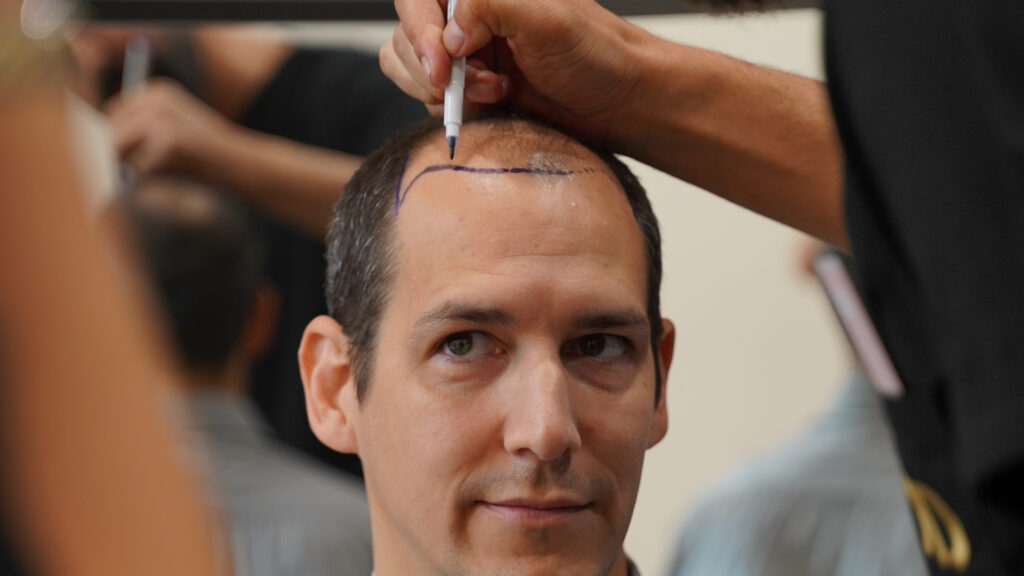Dental bone grafting is a procedure that may be necessary prior to a dental implant surgery. To perform this procedure in the best conditions, you can choose a dental trip to Turkey. In addition to offering very attractive rates, Turkey has several advantages. Choosing Turkey for your bone grafting procedure allows you to benefit from the latest cutting-edge technology in a healthy, warm, and pleasant environment.
When is bone grafting necessary?
To understand why in some cases a bone graft is necessary, it is worth looking at how grafting dental implants works. Implantology allows for the permanent attachment of dentures or crowns to the jaws. Dental implants can be offered to people who have had one or more teeth extracted. Beyond the aesthetic aspect, they allow to find an optimal mastication, thus supporting a normal digestion.
The dental implant takes the form of a small titanium screw, which measures between 6 and 13 mm in length and between 3 and 6 mm in diameter. Generally conical, the shape of the implant mimics that of a tooth root. These artificial dental roots can support dental implants (crowns, bridges and other complete or partial prostheses).
When the dental implant is placed, it can bond to the bone in which it is placed through the phenomenon of osseointegration. This osseointegration phenomenon creates a very strong mechanical bond between the implant and the jawbone.
The placement of dental implants requires the presence of sufficient bone volume. In some patients, the amount of bone may be insufficient. In this case, it becomes necessary to perform a dental bone graft, also called a pre-implant bone graft.
Pre-implant bone grafting is especially necessary for patients who lack bone density because of a long-standing toothlessness that has not been treated. Indeed, after tooth loss, there is an irreversible bone resorption phenomenon in the jawbones. This bone resorption is caused by a lack of pressure stimulation on the bone, which leads to the disappearance of bone that is eliminated by the body. When the jawbone has significant defects, it is also possible to perform a block bone graft.
The loss of bone density can also be caused by periodontal disease, trauma, or genetic problems (cleft lip palate) leading to the loss of certain teeth. Finally, smoking, poor oral hygiene and poor eating habits can account for a lack of bone volume in the jaw.

Bone graft material :
To perform a bone graft, several types of materials can be used. Bone grafting procedure varies somewhat depending on the type of graft used. In fact, there are several types of grafts: autogenous graft, allogeneic graft, xenogeneic graft and synthetic material grafts.
Autogenous bone
Autogenous bone is bone that comes from the patient himself. To harvest the bone needed to reconstruct the site intended to receive the dental implant, a second intraoral surgical site, usually in the lower jaw (either on the chin or on the sides), is then opened. Autogenous bone is then harvested and stabilized with a mini screw.
Allogenic bone
Allogenic bone grafting uses bone from another person. To ensure the external donor is compatible, rigorous testing is performed. When these grafts are used, they come from a specific bank.
Xenogeneic bone
We talk about xenogenic bone when the transplant comes from an animal. The animal-derived graft is usually from cattle and pigs. These animals come from dedicated farms, and traced to avoid any infectious risk.
Synthetic materials
With Body Expert, the grafted bones are synthetic. These grafts are made from a synthetic biomaterial that plays the same role as a bone graft. It is produced in a laboratory, in the strictest respect of hygiene conditions. The use of biomaterials has many advantages. Biomaterial grafting is faster and less painful, and only requires one surgical site, the one that receives the graft.
How do bone grafts work?
Bone grafting is indicated when it is not possible to proceed directly to the placement of a dental implant. Its realization involves the implementation of a specific procedure.
Before dental bone graft
Before any bone grafting, the dentist executes a pre-implant assessment. This pre-implant assessment includes several examinations (3D scanner, dental panoramic X-ray, etc.) performed to precisely determine the quantity and quality of bone in the area that will receive the implant. Only after this consultation will the dentist be able to determine the need for pre-implant surgery.
The bone graft
The procedure is performed under local anesthesia of the areas to be treated. The surgical protocol for a pre-implant bone graft is defined on a case-by-case basis, depending on the initial condition of the patient’s bone ridges. In general, the bone present is precisely cut away according to the needs of the graft, the soft tissue is pushed back and the bone graft is placed.
After surgery
Post-operative recovery varies depending on the procedure and the patient (their age, general health status, etc.). Dental bone grafting requires a period of rest. On a case-by-case basis, painkillers and antibiotics may be prescribed to relieve any postoperative pain. Mouthwash from the next day until complete healing (5 to 8 days) is also necessary to allow proper healing. Whatever the prescription made, it is essential to follow it to avoid discomfort and temporary pain.

What is the recovery time after a bone graft
The recovery time depends on a multitude of factors. It is estimated that this recovery time is between 2 weeks and 2 months. Excellent oral hygiene is essential.
For the first few days after the operation, it is recommended that you do not engage in physical activities and that you are very careful when brushing your teeth. The dentist may also advise the patient to apply ice to the cheek opposite the operated area.
Swelling may occur and persist for a few days after the dental bone graft. To avoid clotting, tobacco and alcohol should be avoided. Also, to avoid pressure on the previously operated areas, soft food is preferred to avoid chewing.
Are dental bone grafts painful?
After a bone graft, it is normal to feel discomfort or even pain around the grafted area. The pain experienced can vary from person to person. While some patients will experience pain immediately after surgery, others will experience pain in the days following surgery. In most cases, the pain will be almost completely gone after 5 to 7 days. Painkillers are routinely prescribed to reduce discomfort.
Why have your dental implants and dental bone grafting done in Turkey?
Turkey is very well served by UK airports. Only three short hours from London, Turkey is a country that shines with its culture, gastronomy, and climate. But not only that! Turkey is among the star destinations for dental travel. And for good reason, the country has the best specialists, working in facilities equipped with innovative technologies. With the use of state-of-the-art technological equipment, dentists work in the best conditions and offer some of the best dental care in the world. Turkey has a large number of high-quality dental clinics with experienced dentists, modern equipment and well-developed logistics. Unlike European dentists, in Turkey, specialists and professors are dedicated to specific treatments. For example, grafting and implant placement are performed by specialist implantologists, who have precise knowledge and expert know-how in this field.
With high quality dental treatments available at low cost, Turkey is a must for dental bone grafting. For your dental care, you can expect to save an average of 80% compared to the rates applied in the.
It is impossible to mention Turkey without mentioning its cultural qualities. Opting for a dental trip to Turkey allows you to benefit from a warm welcome, and to discover a country with a thousand-year-old history. Thanks to its high-quality tourist infrastructure, Turkey welcomes travelers in optimal conditions, both in terms of safety and comfort. Another advantage of dental tourism in Turkey is the possibility to combine dental treatment with a stay in the beautiful Turkish capital. Istanbul is one of the most popular destinations in the world.
With Body Expert, take advantage of a personalized accompaniment for your dental bone graft in Turkey. Our agency specialized in medical and aesthetic tourism located in Istanbul offers an English-speaking assistance to be supported at each stage of care. Going to Istanbul for your dental bone graft will allow you to discover the most authentic face of Turkey while benefiting from the services of the best dental clinics in Turkey.
How much does dental bone grafting cost in Turkey ?
Price of a bone graft in Turkey: 350€. With Body Expert, dental bone grafts are made from a synthetic biomaterial.
Are there alternative procedures to dental bone graft?
There are alternative procedures to bone grafting:
The Sinus Lift
Sinus Lift, or sinus grafting, consists of gently lifting the mucous membrane of the maxillary sinus and filling in its base to increase the bone volume. As bone regeneration occurs, the height of the bone increases. This prepares it to receive dental implants in the premolars and molars.
Prior to a sinus lift, an X-ray examination is necessary. The height and width of the sinus cavity is measured, and any pathologies are detected.
Preservation of the extraction socket
After a tooth extraction, bone healing inevitably induces vertical and horizontal bone loss. This loss of bone density can compromise the integration of a dental implant. Preservation of the extraction socket consists of filling the space left by the root of the tooth with a biomaterial filler after a dental extraction. Preservation of the extraction socket then prevents a loss of bone volume caused by the tooth extraction.
Guided bone regeneration
Guided bone regeneration relies on the addition of biomaterial filler to the bone ridge according to the desired volume. The material is then covered with a membrane that will isolate it from the gum. In most cases, the dental implant is placed at the same time as the guided bone regeneration.
This technique can be combined with platelet-rich plasma therapy. Platelet-rich plasma therapy has long been used in hospitals to speed up the body’s healing process. This therapy accelerates the alveolar repair process. It is used in implant surgery by intraoral injection during bone grafting and during the placement of dental implants. Accelerated healing reduces the risk of complications, infections and post-surgical discomfort.
Dental bone graft testimonials:
Morgane
Yassini
https://www.youtube.com/watch?v=hb5W3jqg6e8
Marwa
Anna
Sabine
Dental bone grafting before/after:






21483 vues
2 commentaires
1






2 Commentaire(s)
Tous ces témoignages donnent vraiment envie de se laisser tenter.
Moi qui ait de très très gros soins dentaires à faire, avec en l’occurrence 10 dents manquantes et beaucoup qui sont abîmées à cause d’une grave maladie, il ne reste qu’à étudier les tarifs pour les soins de dents abîmées, la greffe synthétique d’os absolument nécessaire suite à une résorption, et enfin beaucoup d’implants et probablement la pose de facettes.
Je n’ose même pas imaginer le prix final …
En tous cas félicitations pour tous les commentaires élogieux des clients de France.
Cordialement,
Delphine
Bonjour Delphine et enchanté ????
Merci pour votre commentaire ☺️ Nous nous efforçons de faire notre travail avec passion et rigueur. La satisfaction de nos patients est notre priorité.
Concernant vos soins dentaires, n’hésitez pas a faire une étude par nos équipes et sans engagement de votre part. Nous sommes là pour ça.
Voici notre protocole pour être mis en relation avec nos équipes dédiées et ainsi obtenir des informations et un devis gratuit pour vos soins. Veuillez remplir un formulaire en cliquant sur ce lien https://www.bodyexpert.online/devis
une de nos assistantes de clientèle vous contactera directement via Whatsapp (application gratuite) afin de répondre a toutes vos questions et établir votre dossier.
???? belle journée à vous de la part de l’équipe Bodyexpert.online